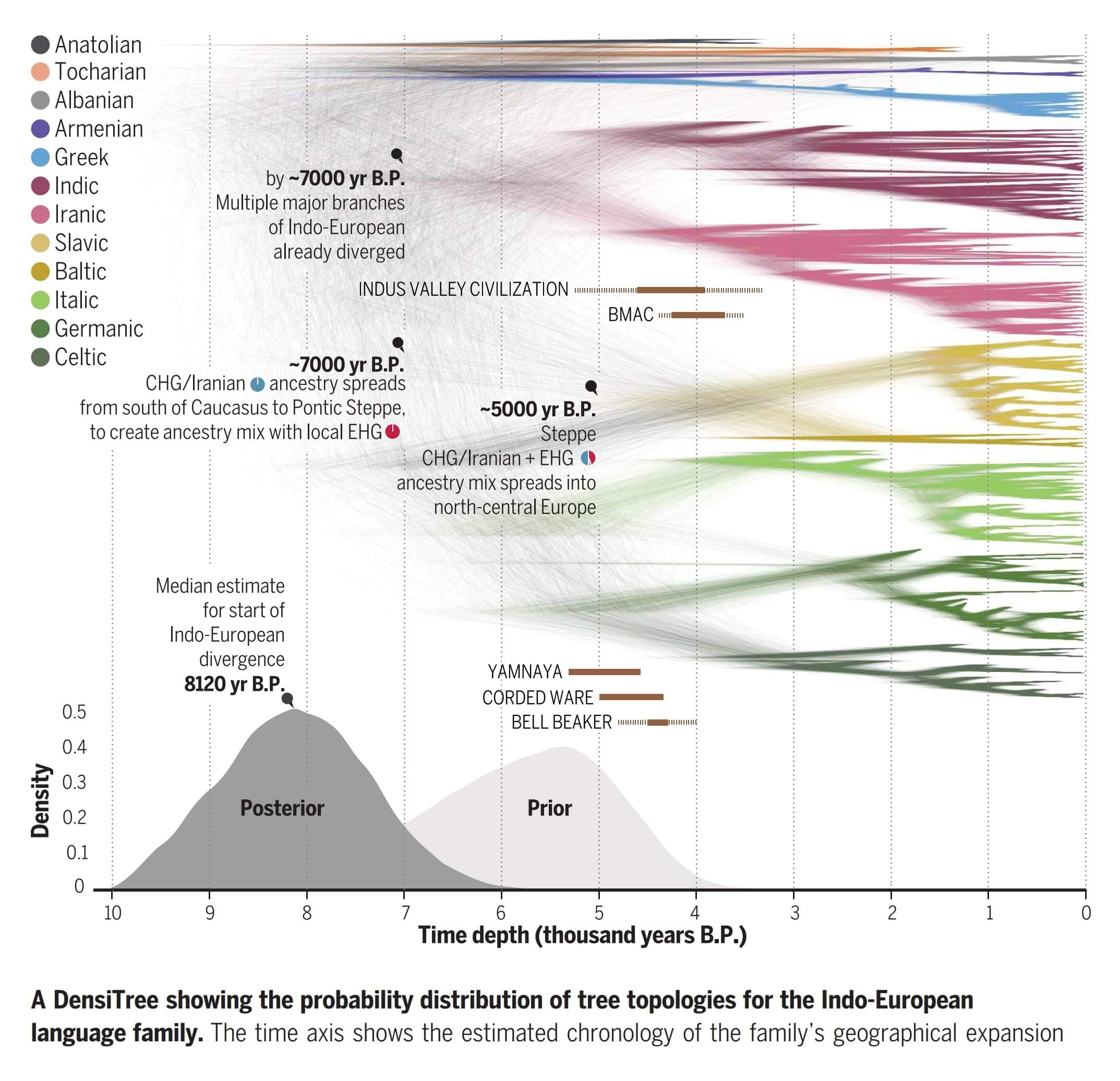Paul Heggarty: "A New Database, Family Tree and Origins Hypothesis for the Indo-European Languages"

Language, Archaeology and Ancient DNA
A New Database, Family Tree and Origins Hypothesis for the Indo-European Languages
Paul Heggarty
Pontificia Universidad Católica del Perú
Almost all Europe’s languages — Romance, Germanic, Celtic, Slavic, Baltic, Greek and Albanian — stem from the same deep root. But where did they come from? And when and how did they get here — while their distant cousins spread over much of Asia, as far as Xinjiang and Bangladesh? This talk ranges over the evidence, disputes and latest findings in archaeology, ancient DNA, and above all the linguistics of the Indo-European language family.
A recent article in Science* publishes a new form of family tree for 161 Indo-European languages, ancient and modern, and a new hypothesis on their origins and expansion. It presents a new open database on word relationships across these languages (iecor.clld.org), and then controversially applies Bayesian phylogenetic analysis to estimate the time-depth of the family and its many branches.
Indo-European is dated to some 8100 years ago, as a central estimate of when it began to spread and diverge. This date, and the patterns of divergence within the family tree, are assessed against cultural and demographic changes and migrations inferred from the archaeological and ancient DNA records. The new linguistic results fit with neither the ‘Steppe’ nor the ‘farming’ hypothesis for Indo-European origins. Instead, separate aspects of each combine into a new, hybrid hypothesis: Indo-European originated not on the Steppe north of the Black Sea, but in the northern arc of the Fertile Crescent; only some of its main branches in Europe came through the Steppe, as a secondary staging-post.
The findings are controversial, so this talk sets out the methodological issues that attend not just Bayesian language phylogenies but also the traditional techniques that have claimed to give different answers on Indo-European origins.
* To access and download the Science paper free, use the link at: iecor.clld.org
Support page for more details: https://paulheggarty.info/indoeuropean
* * *
Paul Heggarty is a historical linguist with a focus on how our languages open up a window on our past, in concert with the perspectives from genetics, archaeology and history. He has long research experience and co-authorship (at Cambridge and at Max Planck Institutes in Germany) in each of these disciplines, aimed at gaining a more coherent, holistic understanding of (pre)history. He founded and runs https://soundcomparisons.com and led the IE‑CoR database on cognate relationships across Indo-European (iecor.clld.org), revealing both the potential and the pitfalls of Bayesian phylogenetics as applied to language families. His interests range worldwide, but focus also on South America, where he now holds a cátedra de excelencia at the Pontificia Universidad Católica del Perú in Lima.
See eva-mpg.academia.edu/paulheggarty and https://paulheggarty.info/symposia.
Map of South Campus
View directions.
View on map of the Faculty of Humanities - South Campus.
View map of South Campus (pdf).
